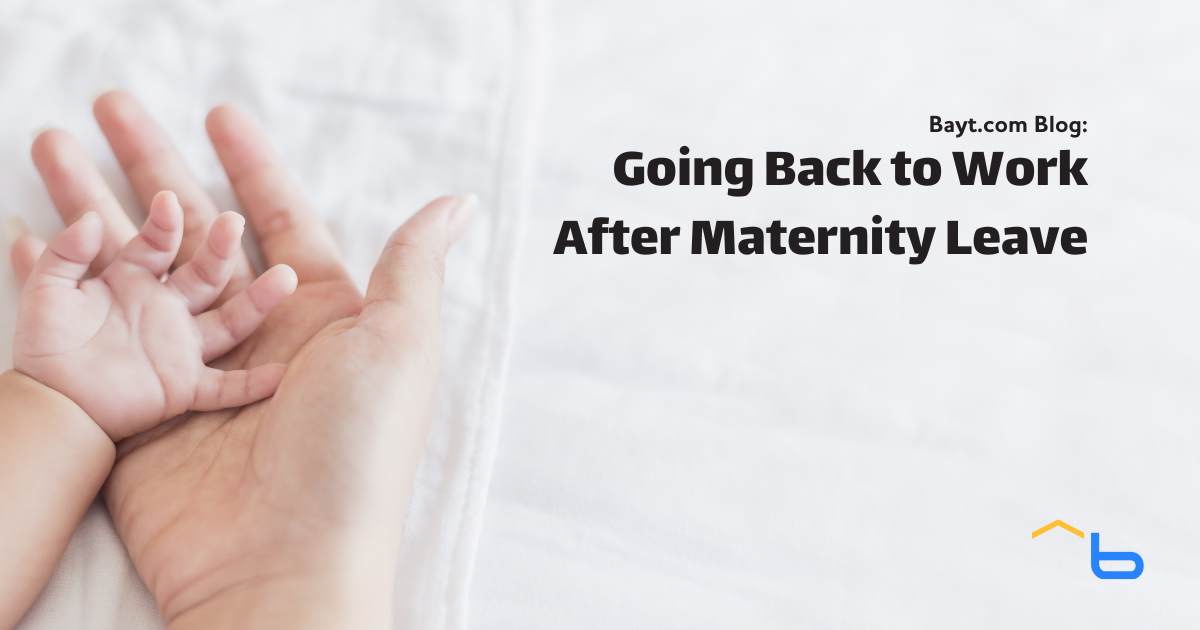
Returning to work after maternity leave is a significant milestone for many mothers. While it can be an exciting time to reconnect with colleagues and resume professional responsibilities, it may also come with challenges and adjustments. As we celebrate Mother's Day, it's essential to recognize the unique journey of working mothers and provide support as they transition back to the workplace. In this article, we'll explore practical tips for a smooth return to work after maternity leave and provide a comprehensive list of maternity leave policies across MENA countries.
What is maternity leave?
Maternity leave is a period of authorized absence from work granted to expectant or new mothers before and after childbirth. It is designed to provide mothers with the time and opportunity to recover from childbirth, bond with their newborns, and adjust to the demands of parenthood without the pressure of work responsibilities. The duration of maternity leave varies by country and employer, with some offering paid leave, unpaid leave, or a combination of both.
During maternity leave, mothers may receive financial support in the form of paid maternity leave, allowing them to take time off from work without experiencing a significant loss of income. This financial assistance helps alleviate financial stress and enables mothers to focus on their health and the well-being of their newborns during this critical period.
In addition to providing financial support, maternity leave also offers job protection, ensuring that mothers can return to their previous positions or equivalent roles without fear of discrimination or dismissal. This job security provides peace of mind to expectant and new mothers, allowing them to focus on their families without worrying about the status of their employment.

Returning to work after maternity leave
- Plan ahead: Before returning to work, take the time to plan and organize childcare arrangements, including finding a reliable caregiver or daycare facility. Consider visiting childcare options and establishing a routine before your return date.
- Communicate with your employer: Keep open lines of communication with your employer regarding your return date, any necessary accommodations, and any changes to your work schedule. Discuss flexible work arrangements or modifications to your role if needed.
- Ease back into work: Consider starting with a phased return, such as part-time hours or telecommuting, to ease the transition back to full-time work. Gradually increase your workload as you become more comfortable and confident in your role, if possible.
- Update your workspace: Make any necessary adjustments to your workspace to accommodate any new needs. Ensure that you have access to the necessary resources and support to perform your job effectively.
- Practice self-care: Prioritize self-care during this transition period, including getting enough rest, staying hydrated, and seeking support from friends, family, or support groups. Take breaks when needed and practice mindfulness techniques to reduce stress and anxiety.
Managing work-life balance
- Set realistic expectations: Recognize that it may take time to adjust to balancing work and family responsibilities. Set realistic expectations for yourself and prioritize tasks accordingly. Be patient with yourself as you navigate the challenges of returning to work.
- Establish boundaries: Set boundaries between work and home life to prevent burnout and maintain a healthy work-life balance. Schedule dedicated time for work tasks and quality time with your family. Communicate your boundaries with your employer and colleagues to ensure they are respected.
- Delegate tasks: Delegate tasks both at work and at home to lighten your load and reduce stress. Don't hesitate to ask for help from colleagues, family members, or childcare providers. Remember that it's okay to prioritize your well-being and delegate tasks when needed.
- Utilize flexible work arrangements: Take advantage of flexible work arrangements, such as telecommuting or flexible hours, to better accommodate your family's needs. Discuss potential options with your employer and explore ways to create a more flexible work schedule that meets both your professional and personal commitments.
- Practice self-compassion: Be kind to yourself and recognize that it's okay to ask for help. Take a step back and acknowledge your efforts as a working parent. Celebrate your successes and milestones along the way, no matter how small they may seem.
Here is a comprehensive list of maternity leave policies across MENA countries:
- United Arab Emirates: 45 days of fully paid maternity leave + 15 days half paid.
- Saudi Arabia: 10 weeks of fully paid maternity leave.
- Qatar: 50 days of fully paid maternity leave.
- Kuwait: 70 days of fully paid maternity leave.
- Bahrain: 60 days of fully paid maternity leave.
- Oman: 50 days of fully paid maternity leave.
- Egypt: 90 days of fully paid maternity leave.
- Jordan: 70 days of fully paid maternity leave.
- Lebanon: 70 days of fully paid maternity leave.
- Morocco: 14 weeks of fully paid maternity leave.
Maternity leave is not only beneficial for mothers but also for families, employers, and society as a whole. By supporting mothers during this important time, we promote gender equality, support family well-being, and contribute to the overall health and productivity of our workforce!
Let us know if returning to work after maternity leave was challenging for you, we’d love to hear about your experiences!

